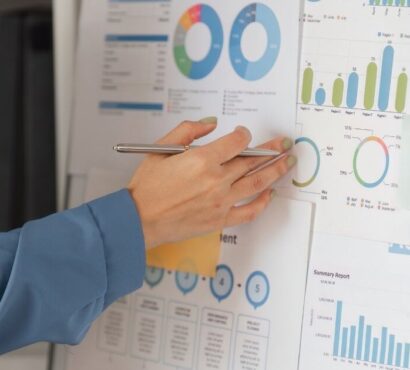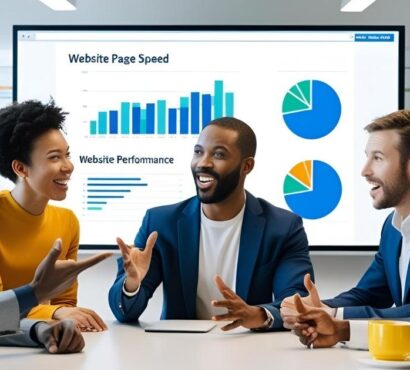Ever feel like you’re throwing money at Google Ads and getting nowhere? You’re not alone, but 2025 is your year to change that. Google Ads, when used strategically, can be a goldmine. But simply creating ads isn’t enough – you need to maximize your Return on Investment (ROI). In this guide, we’ll explore actionable strategies to double your ROI with Google Ads in 2025. Ready to dive in?
Understanding ROI in Google Ads
First things first, what on earth is ROI? In simple terms, ROI, or Return on Investment, is a measure of how much profit you’ve made from your ad spend. The formula is straightforward:
ROI=Cost of Investment \ Net Profit×100
Why should you care about ROI? Because it tells you if your Google Ads campaigns are actually profitable. ROI helps you understand where your money is best spent and which strategies are working. Spoiler alert: it’s not about spending more; it’s about spending smarter.
The Evolution of Google Ads in 2025
Google Ads isn’t static; it’s evolved a lot even in the last year. Changes like improved automation, refined targeting options, and more sophisticated AI have all impacted how we create successful ad campaigns. Staying ahead of these changes is crucial. For instance, automated bidding strategies have become more accurate, aligning bids more closely with real-time market changes.
Setting Up Your Google Ads for Success
Want to maximize your ROI? It starts with a solid foundation:
- Identify Your Goals: Whether it’s brand awareness, lead generation, or direct sales, knowing your goal drives all other decisions.
- Research Your Audience: Utilize Google’s Audience Insights to understand your potential customers better.
- Choose the Right Keywords: Use tools like Google Keyword Planner to find relevant, high-performing keywords.
Crafting Compelling Ad Copy
Your ad copy is your first impression—make it count. Great ad copy includes:
- A Clear Value Proposition: Tell users why your product/service is the best.
- Strong CTAs (Calls to Action): Urge your audience to take immediate action.
- Ad Extensions: Use site links, callouts, and other extensions to offer more info and capture attention.
Optimizing Your Landing Pages
Think the ad is the only part that matters? Think again. A killer landing page can make or break your campaign’s ROI. Ensure your landing pages are:
- Relevant: The content should match the ad that brought visitors in.
- Fast: Page speed is crucial—a slow page can kill conversions.
- User-Friendly: Easy navigation and clear information lead to higher conversions.
Utilizing Advanced Targeting Options
Targeting options have never been better. Take advantage of:
- Demographic Targeting: Tailor your ads based on age, gender, and income.
- Geographic Targeting: Focus on specific locations to maximize relevance.
- Behavioral Targeting: Show ads to users based on their online activity.
Combining these targeting methods ensures you’re hitting the sweet spot of your audience.
Leveraging Automated Bidding Strategies
Manual bidding is passé. Automated bidding strategies have become incredibly precise. They adjust your bids in real-time based on numerous factors you wouldn’t be able to consider on your own:
- Enhanced CPC (Cost-Per-Click): Adjusts your bid higher or lower based on the likelihood of a conversion.
- Target CPA (Cost-Per-Acquisition): Sets bids to get as many conversions as possible at the target cost-per-acquisition.
- Maximize Conversions: Automatically sets bids to help get the most conversions for your campaign.
Enhancing Ad Quality Score
Quality Score is Google’s way of rating the quality and relevance of your ads. It directly affects your CPC and ad rank. Focus on these three components:
- Expected Click-Through Rate (CTR): Craft attractive, relevant ads.
- Ad Relevance: Ensure your ad copy aligns closely with the keywords you’re targeting.
- Landing Page Quality: User experience on your landing page should be exemplary.
A/B Testing and Ad Optimization
Think you’ve nailed your ad? Test it! Here’s why A/B testing is essential:
- Identify what works: Compare two versions of an ad to see which performs better.
- Iterative Improvement: Constantly refine your ads based on test results.
- Increase Conversion Rates: Small tweaks can lead to significant improvements in performance.
Tools like Google Optimize can simplify this process, providing insights to fine-tune your campaigns.
Monitoring and Analyzing Campaign Performance
Success isn’t just about launching a campaign; it’s about ongoing monitoring. Pay close attention to key metrics like:
- CTR (Click-Through Rate): Measures how many people click your ad versus how many see it.
- Conversion Rate: Percentage of visitors who complete an action after clicking your ad.
- CPA (Cost-Per-Acquisition): The average amount you spend for each conversion.
Utilize tools like Google Analytics and Data Studio for comprehensive insights.
Utilizing Remarketing Techniques
Ever thought about following your prospects around the web? That’s what remarketing does! Here’s how to make the most of it:
- Segment your audience: Target ads based on user behavior.
- Frequency Capping: Avoid bombarding the same user with too many ads.
- Compelling Offers: Use special promotions to entice return visits.
Remarketing is like a friendly nudge, reminding prospects why they showed interest in your product in the first place.
Exploring Additional Ad Formats
Don’t limit yourself to standard search ads. Explore:
- Display Ads: Visually appealing and reach a broader audience.
- Video Ads: Leverage the power of YouTube—engaging and impactful.
- Shopping Ads: Perfect for e-commerce, directly showcasing products.
Experimenting with different formats can lead to discovering the most effective for your brand.
Budget Management and Allocation
Proper budget management is crucial. Here’s how to stretch your dollars:
- Realistic Budgets: Start small and scale as you see success.
- Efficient Allocation: Distribute budgets according to what campaigns are performing best.
- Flexibility: Be ready to adjust based on performance data.
Capitalize on AI and Machine Learning
AI isn’t just a buzzword; it’s a game-changer. Google Ads increasingly relies on AI to:
- Predict outcomes: AI tools can forecast campaign performance.
- Automate optimizations: Save time and improve results with machine learning.
- Personalize experiences: Tailor ads to individual user behaviors and preferences.
Addressing Common Pitfalls and Challenges
Steer clear from common mistakes like:
- Neglecting mobile optimization: Mobile accounts for a significant portion of traffic.
- Ignoring negative keywords: They prevent your ads from showing up for irrelevant searches.
- Being too broad: Highly specific targeting usually delivers better ROI.
Case Studies of Successful Campaigns
Learning from others’ success can guide your strategies. For example, brands like XYZ Corp saw a 150% ROI increase by implementing more targeted keyword strategies and leveraging AI-driven bidding. Analyze these cases to extract strategies that could work for your business.
Future Trends Nearing 2026
Looking ahead can give you an edge. Keep an eye on:
- Voice Search: It’s growing; optimize your ads for voice queries.
- Privacy Changes: Be prepared for more stringent data privacy regulations.
- Enhanced AI Capabilities: Continue to stay updated on AI advancements as they unfold.
Conclusion
Doubling your ROI with Google Ads in 2025 is all about smarter spending, precise targeting, and staying updated with the latest tools and trends. Be adaptable, continuously learn, and don’t be afraid to test new tactics. Ready to take your ROI to the next level? It’s closer than you think!
Frequently Asked Questions (FAQs)
How long does it take to see ROI improvements?
Generally, you can start seeing improvements within a few weeks of optimizing your campaigns, but substantial ROI increases may take a few months.
What are the most cost-effective Google Ads strategies?
Using automated bidding, extensive A/B testing, and effective use of negative keywords are some of the most cost-effective strategies.
Can small businesses also double their ROI with Google Ads?
Absolutely! With targeted strategies and careful budget management, small businesses can achieve significant ROI improvements.
How important are landing pages really to ROI?
Very important. A well-optimized landing page can dramatically improve your conversion rates, directly affecting your ROI.
Are there tools that automate ad optimization?
Yes, tools like Google’s Smart Bidding and third-party platforms such as Kenshoo and WordStream can automate and optimize ad performance.






